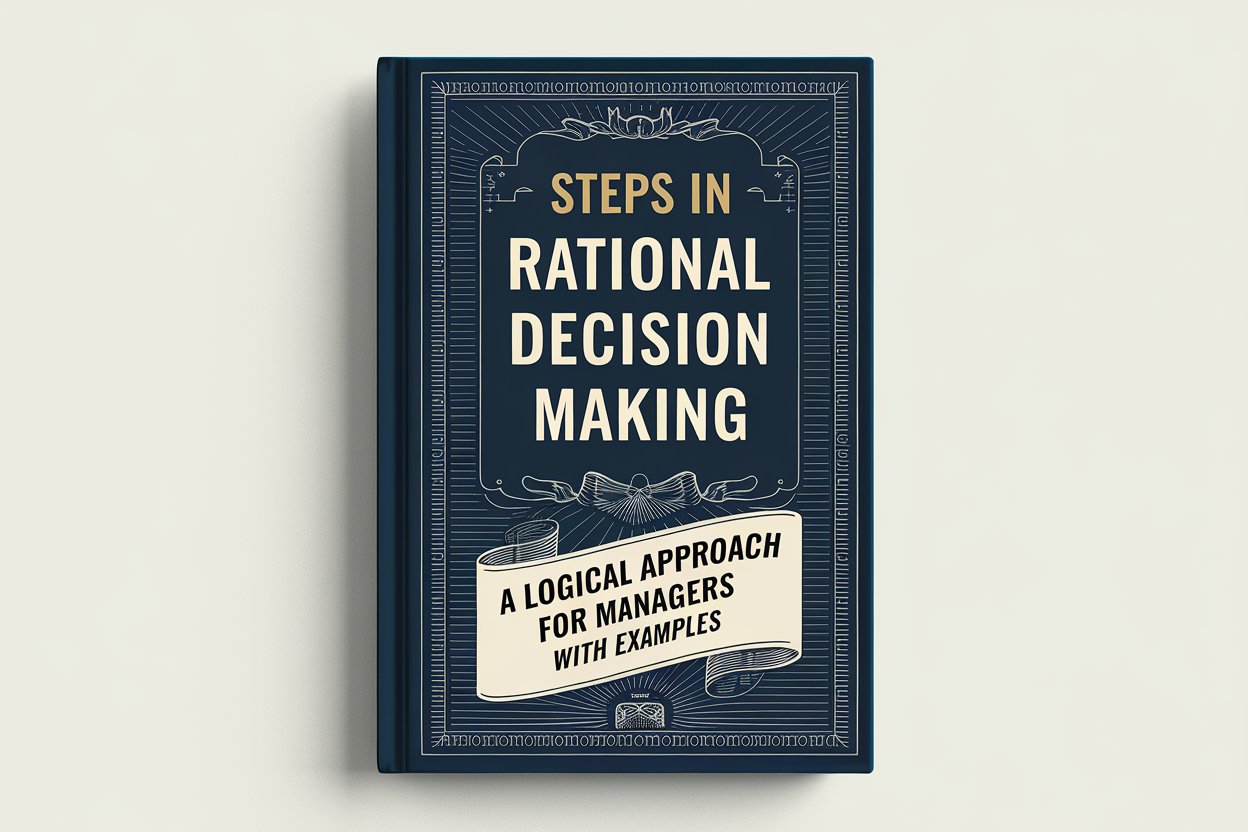Business Administration
Q.NO.5 “Steps in Rational Decision Making: A Logical Approach for Managers with Examples”.

“Steps in Rational Decision Making: A Manager’s Approach with Examples”
Rational decision-making involves a structured and logical process that helps managers arrive at well-thought-out solutions by systematically analyzing the situation and considering alternatives. The process is designed to maximize outcomes by following a sequence of steps.
1. Identify and Define the Problem
- Overview: The first step is recognizing that a problem exists and clearly defining it. This helps focus the decision-making process on solving the right issue.
- Example: A company is experiencing declining sales over the last two quarters. The manager defines the problem as, “How can we improve sales performance over the next six months?”
2. Gather Relevant Information and Data
- Overview: Collect all relevant information and data needed to understand the problem fully. This includes internal data (e.g., sales reports) and external data (e.g., market trends or customer feedback).
- Example: The manager gathers data on sales trends, customer preferences, competitor activities, and feedback from the sales team to better understand the cause of declining sales.
3. Identify Alternatives
- Overview: Once the problem is defined, the next step is to develop a list of possible solutions or alternatives. This helps ensure that multiple options are considered before making a final decision.
- Example: To boost sales, the manager considers alternatives such as launching a marketing campaign, offering discounts, expanding into new markets, or improving product quality.
4. Evaluate the Alternatives
- Overview: Each alternative is analyzed based on criteria such as cost, feasibility, potential risks, and alignment with organizational goals. This step ensures that each option is carefully considered.
- Example: The manager evaluates the cost of launching a marketing campaign versus offering discounts. They also assess whether these actions align with the company’s long-term strategy and whether they can be implemented within budget.
5. Choose the Best Alternative
- Overview: After evaluating all options, the manager selects the alternative that best addresses the problem while offering the most benefits and least drawbacks.
- Example: After weighing the pros and cons, the manager decides to launch a targeted marketing campaign because it has the potential to reach more customers while maintaining product pricing and brand value.
6. Implement the Decision
- Overview: The chosen alternative is put into action. This involves planning, assigning tasks, and ensuring that resources are available for effective execution.
- Example: The manager develops a marketing plan, assigns roles to the marketing team, allocates a budget, and sets a timeline for execution.
7. Monitor and Evaluate the Decision
- Overview: After implementation, the results of the decision are monitored to ensure that it is solving the problem. If the decision doesn’t produce the desired results, adjustments may be necessary.
- Example: The manager tracks key performance indicators (KPIs) such as sales growth, customer engagement, and return on investment (ROI) from the marketing campaign. If sales don’t improve, the manager may revisit the decision to explore other alternatives.
Conclusion
Rational decision-making provides a clear, systematic approach that helps managers address problems logically. By following each of these steps—defining the problem, gathering information, identifying and evaluating alternatives, choosing the best solution, implementing the decision, and monitoring outcomes managers can increase the likelihood of making effective and informed decisions.